Día de Muertos, or Day of the Dead, is one of Mexico’s most famous holidays and traditions
On this day (or days, as the celebrations begin from October 28th to November 3rd) it is believed that loved ones who have passed come visit us from beyond, or Mictlán which is the underworld from Aztec mythology. This special holiday has several special icons that help us celebrate such as La Catrina, sugar skulls, and nowadays the famous Disney movie Coco. However, one of the most essential elements of Día de Muertos is the ofrenda, serving as the gateway between these two worlds.

Ofrendas are altars with offerings for the loved ones that are being remembered. Traditionally, these are made on a big scale, having a community altar, or sometimes a part of the tradition of spending all night at the grave of our loved ones. However, some people have them at home, being in turn an intimate and private symbol of remembrance. Because of the diverse nature of communities in Mexico, some communities might frown upon the use or incorporation of some elements, whereas others might get offended if these are not included. Moreover, some people just do not have the space to make a big, impressive ofrenda where all elements will fit and/or simply wish to make a small gesture for their loved ones. What we are trying to say here is that there are no hard rules that dictate how to make an ofrenda. Instead, we believe it is best that we understand the elements of it and incorporate as many as possible if we want to.
The elements necessary for ofrendas represent all that this visit conveys. The four elements of Water, Earth, Fire, and Wind are represented with different objects throughout the ofrenda. This is offered to symbolize the terrestrial plane that spirits of our loved ones are entering into, also making the transition into this plane as smooth and easy as possible. There are other elements that are there to purify and protect the spirits that visit, especially as traveling from and to Mictlán is a difficult process. Another important part of ofrendas is to put special emphasis on decoration; this is to demonstrate to our loved ones that we care about them visiting and not to offend them after traveling from far. Lastly, and equally if not more important, we incorporate food and other beloved activities that our loved ones used to enjoy and may miss from the terrestrial plane.
This is why we would like to highlight the essential elements that go in ofrendas, allowing the opportunity to explain what it all means and the reason behind all the color and beauty behind ofrendas! Here is a list of essential components and their meaning:

What is the most iconic element on an ofrenda?
Water: the source of life, it is offered to our loved ones for them to quench their thirst after a long journey. In some cultures it is also a symbol of the soul’s purity and it also functions as one of the essential universal conduits, including the two worlds that are joining in this moment.
Copal, or incense: This is used to purify the space with its fragrance and smoke, as it has been believed from our ancestors' times. This purification is necessary as spirits travel to prevent them from encountering or bringing with them any danger and/or harm and it also makes the space a sacred one. Before the arrival of the Spaniards, copal would be burned in any sacred occasion to cleanse and purify spaces, After the arrival of the Spanish some cultures burn incense instead.

Papel Picado: Papel Picado’s significance at the altar is not limited to the colorful and decorative aspects that it provides to the ofrenda. Papel Picado represents wind, one of the four main elements that should be present in the ofrenda. Moreover, ancient cultures used amate paper cutouts to decorate their rituals and ceremonies. Papel picado continues this tradition, replacing deities with images of death, such as skulls, catrinas, and words indicating the festivity being celebrated.
Candles: A lit candle symbolizes Fire. Before the arrival of the Spaniards, inhabitants of indigenous cultures did not have wax, so there were no candles. Ancient Mexicans would use strips of Mexican pine, or ocote, instead. Nowadays we use candles in all their forms, but usually "veladoras" or votive candles. For most, these are white candles where white serves as a purifying element. The flame that candles produce symbolizes light, faith, and hope. When the candle is lit, it serves as a guide for spirits of our loved ones to see their way back and forth. In many communities each candle that is lit represents each of the deceased, meaning, the number of people who are being remembered at the ofrenda will have a candle lit for them. Also, for some, if the candle is purple it will be representative of the family’s mourning. Lastly, some people also position four candles indicating the four cardinal directions, South, North, East, and West, so that it is easy for the spirit to find their way.
Salt: This is a purification element and it serves to give stability to the body of our loved one so that it may return safely and come back the following year.
Cempasuchil (and other flowers): Cempasúchil (Zempoalxóchitl) flower has been from prehispanic times the flower that adorns altars, offerings, and ceremonies dedicated to the deceased. Mexica culture believed that this flower of Nahuatl origin, which names means “flower of twenty flowers”, represented the sun that illuminates and makes for a beautiful road for those who come from Mictlán, the underworld. Because of the meaning it has for the path taken from Mictlán, some ofrendas use this flower’s petals to decorate paths leading into such ofrenda. Indigenous people believe that the cempasúchil flower was a healing plant. Although this belief has been lost over time, today, this flower is essential to decorate the ofrenda but there are other flowers that are used, too. For example, Baby’s breath and Stock flowers are also used for decoration, especially in ofrendas dedicated to infants, because of their color of whiteness and innocence. Flowers are there to make the altar as beautiful as possible so that our loved one visiting us will feel happy and spoiled.

Pan de Muerto: Translates to Day of the Dead bread. This bread symbolizes the cycle of life and death. Its shape also has specific meaning, with each part representing different parts of the body (and the meaning varies depending on the region and beliefs): the center bump represents the skull and/or the heart; and the lines that run down are the four limbs, a cross, and/or the four cardinal points. This bread carries part of our indigenous history, replacing human sacrifices where ofrendas included the offering of a heart, with this specific bread. By placing this bread at the ofrenda it is also a way to spoil our loved ones and offer bread in case they are hungry. Although Pan de Muerto has regional varieties of how it is made, it is commonly made with anise, orange, and a coat of sugar on top. Lastly, this delicious bread is made specially for this holiday, you cannot find this any other time of the year.
Sugar Skulls: also known as calaveras/calaveritas. The same as Pan de Muertos, these symbolize the sweetness of life and death. Having sugar skulls at the ofrenda is representative of Mexican culture’s perspective on death, which tries to emphasize that death can be sweet. Sugar skulls are traditionally made of granulated sugar, chocolate, or amaranth and it is customary to have the deceased’s name written on the skull’s forehead to honor them, or have someone else’s name written on it and give it as a gift (children love them!). These sugar skulls can be found in many forms besides sugar such as clay, papier maché, and wood, so as to have them longer at the ofrenda and reuse in later years and/or for decoration.

Photos of our loved ones: This is one of the most important components to an ofrenda. Ofrendas are offerings we are making to specific people and putting up their picture is the way in which we honor and remember them. These pictures are usually pictures of them doing activities they enjoyed or in which they looked good. If, for some reason there are no pictures available or the ofrenda is dedicated to a group of people or lost souls, sugar skulls with names or referencing the group can also serve the purpose.
Food, drinks, and favorite pleasures: Because the spirits visit us from beyond, it is customary to have food for them ready together with other tastes they might have. It is customary to prepare the spirits’ favorite meal. When making this special dish, it does not matter how complicated it can be, what’s important is the process of remembering our loved one by making it and making sure they enjoy it when visiting. An ofrenda usually includes the spirit’s favorite drink, usually alcoholic, so that they can enjoy it without guilt and think back of fun times they had (with this, some people even include cigarettes or cigars together with a lighter and ashtray so that they can enjoy these, too!). Fruit is also an essential part of an ofrenda, representing the sweet elements of nature and it includes seasonal fruit such as guava, orange, bananas, apples and mandarin. If there are any more pleasures that our loved ones had when they were with us, this is also included here for them to enjoy while they visit.

Resting items: some people include items at their ofrendas that can serve the spirit to rest after a long trip. For example, some believe it is essential to position a petate, or palm mat, for the spirit to rest and a towel and water for them to clean themselves.
Ofrendas are essential and one of the most memorable parts of Mexico's most celebrated holiday, Day of the Dead, due to the meaning behind the overall creation of one and their incomparable beauty. Ofrendas, on their own, are an art form; they allow for creative processes and personalities to be reflected. You have probably seen thousands ofrendas that are all unique and different and it is possible that this might make it confusing knowing "how to make and ofrenda". To create an ofrenda rather than thinking that there is a step-by-step guide on what to include, it is more important to think of it as the spirit of the deceased visiting your house from far beyond and what you would like to offer this person after such a long trip. At the same time you want to make sure all spiritual (and, with it, historical) parts of this belief are respected. Understand that although this is part of a big festivity, most people are mourning loved ones and having an ofrenda is part of the painful process of mourning.

So, what are your thoughts on this? Have you ever made an ofrenda or are you thinking or doing one? What would you like to include? We would love to hear your thoughts on this! If you are looking for items to build your ofrenda, be sure to check out our Día de Muertos Collection Here!
If you subscribe to our newsletter, you will get this and many more content of interests, or join our text-message list so that you are 24/7 on the loop! We also make sure to give our familia of subscribers exclusive promotions, gifts, first-hand look at all new products and, of course, these articles that we love to write for you all!

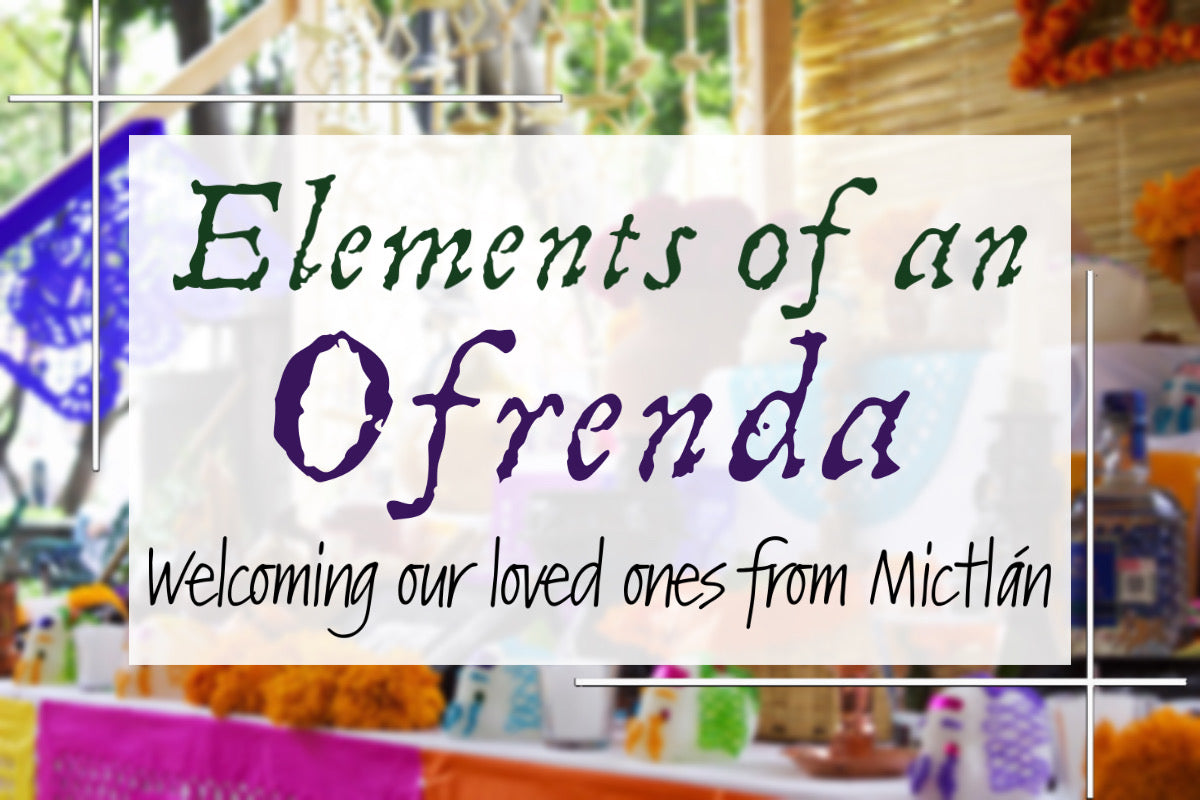
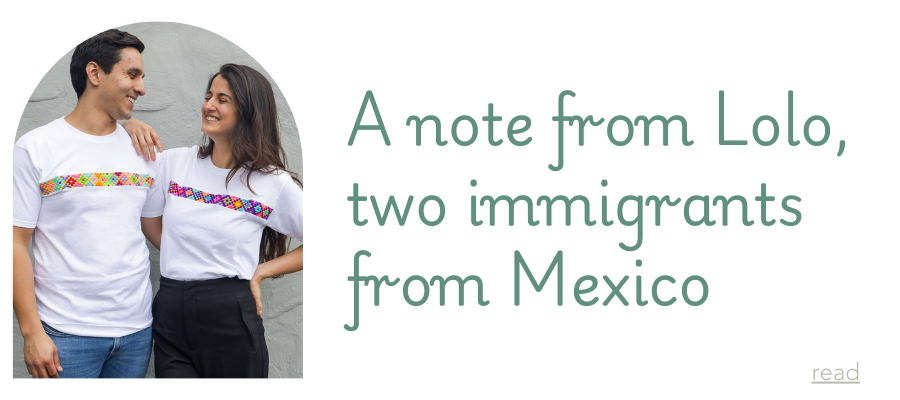
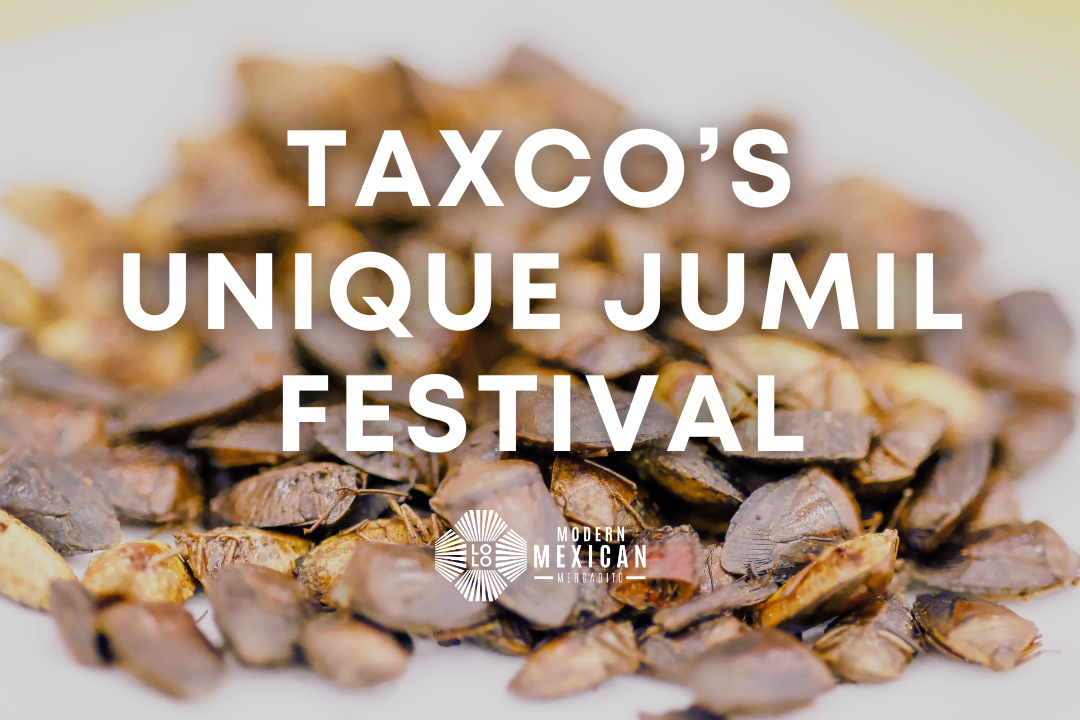
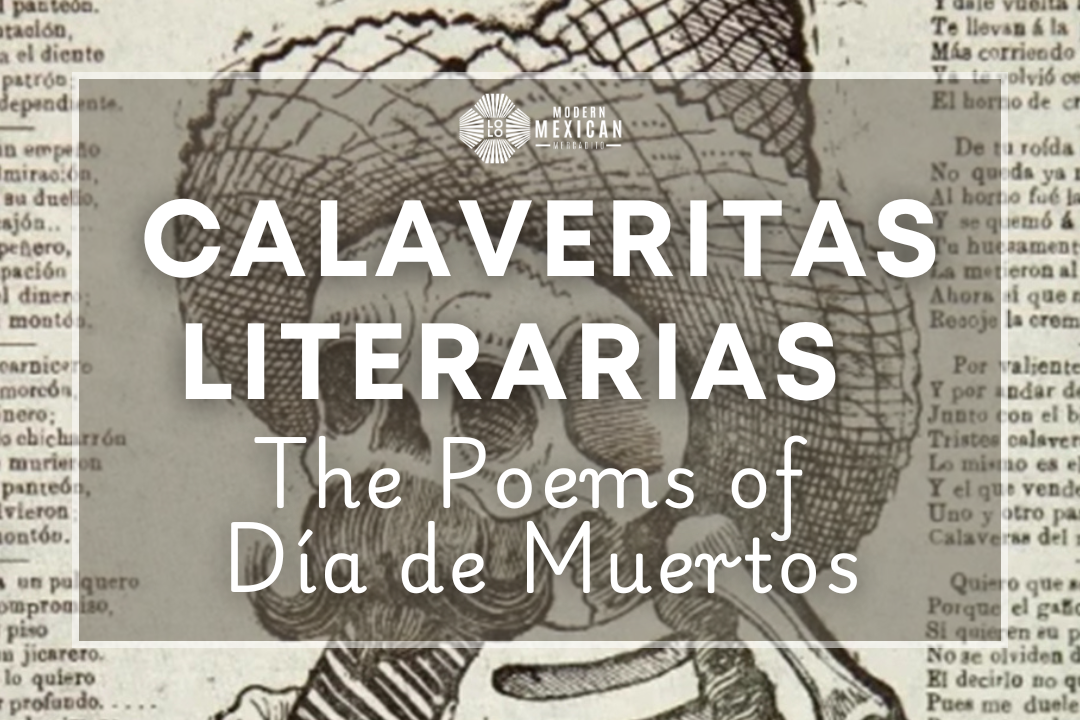
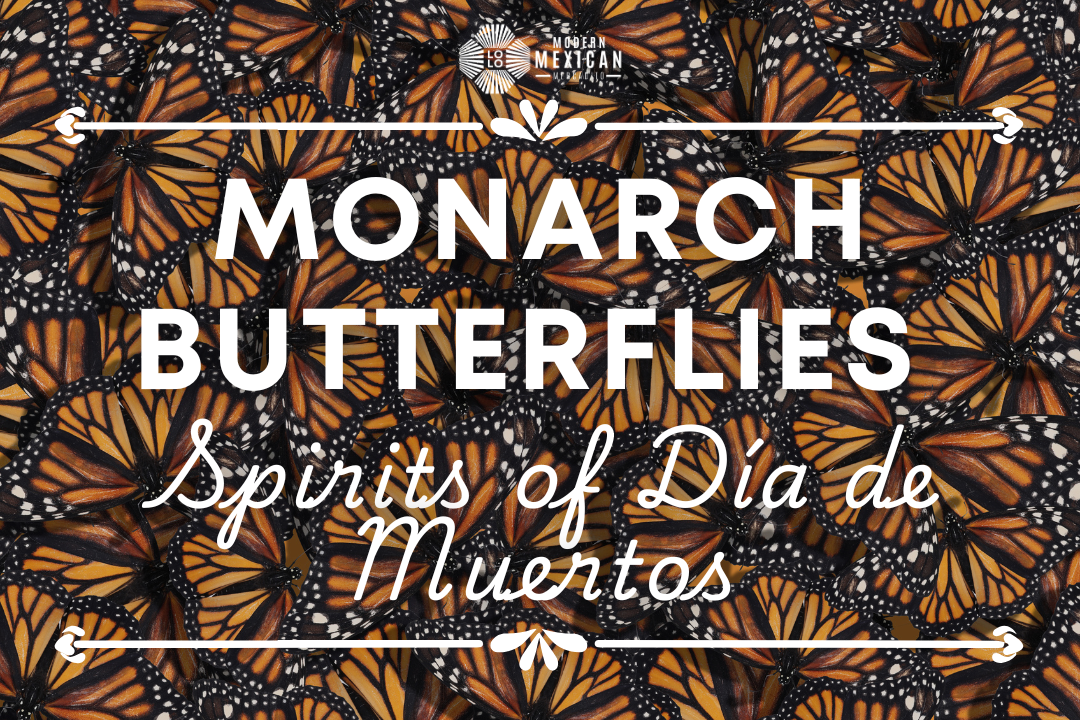
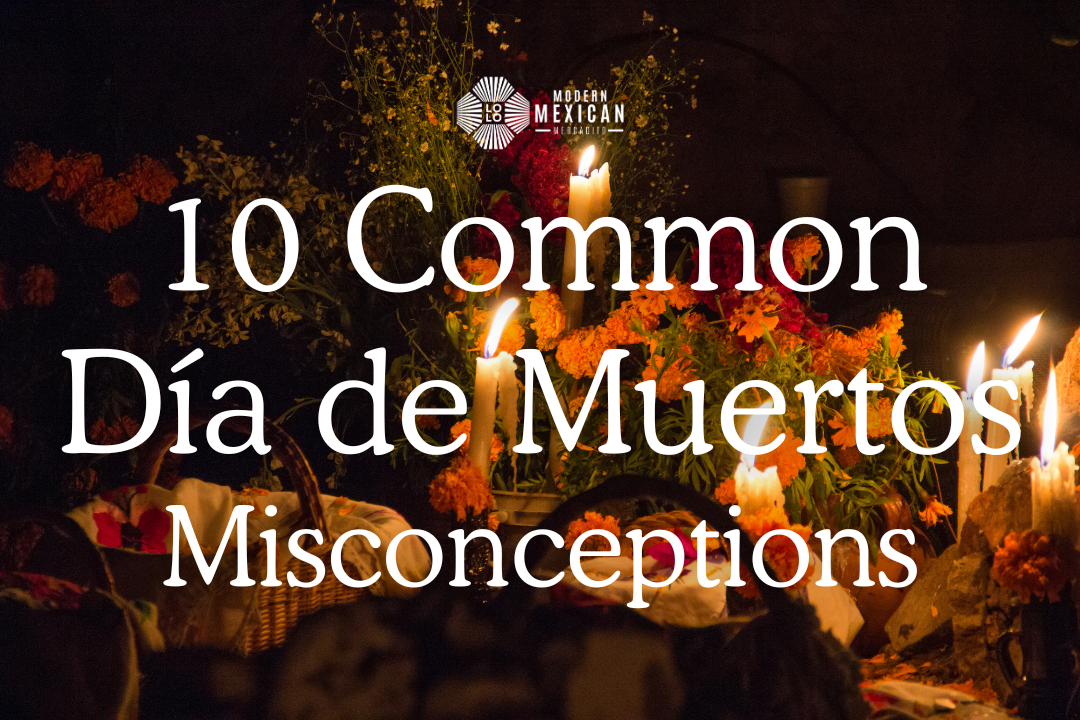
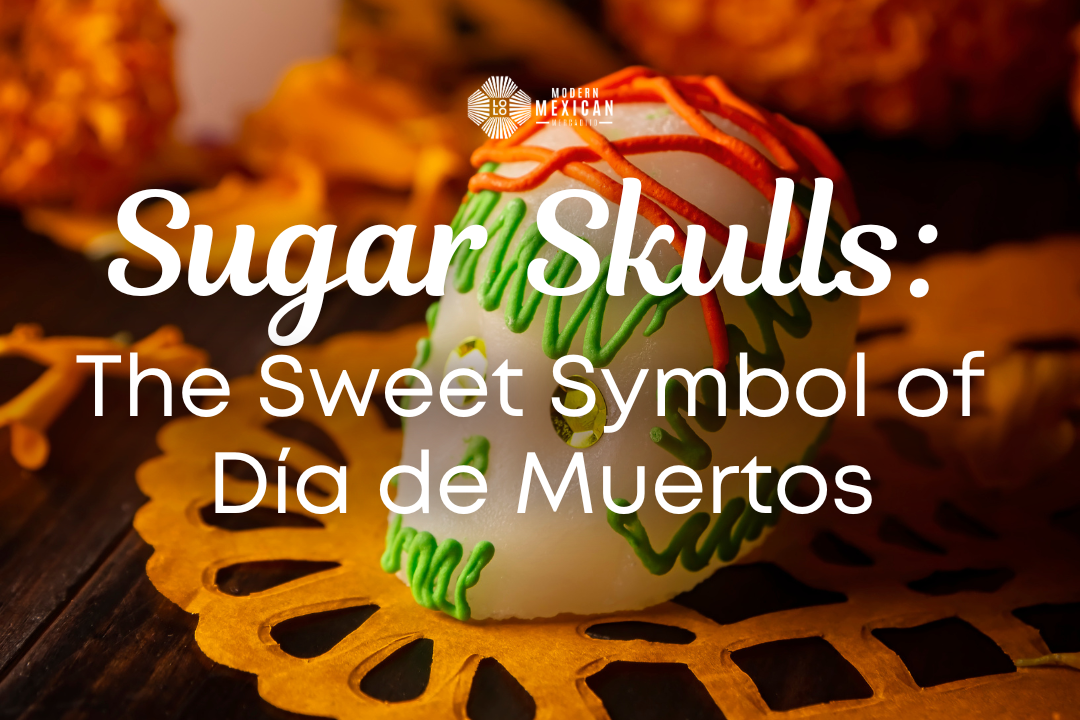

5 comments
Laura
Wonderful post and so informative, thank you for all that you do!
Chris
Thank you for the wonderful post. Dia de Muertos, with the ofrenda, is a holiday of great comfort to me. This act of remembrance and celebration helps me feel connected to all the loved ones I’ve lost over the years and find solace in the belief that their spirits are still present. Additionally, the colorful decorations, music, and festive atmosphere of Dia de Muertos brings a sense of joy and positivity to counterbalance the weight of a loved one’s absence.
Rachel
Hi question, do the candles that are lit stay on for all the days, or are they blown out at night when everyone in the house goes to bed?
Catherine Prevost
Stirring and evocative look at the significance of Dia De Los Muertos.
Sadly I won’t be traveling to Mexico this year but have put together my annual ofrenda in my home. Gracias.
Beth
This was so informative. I love to read your posts. Thanks